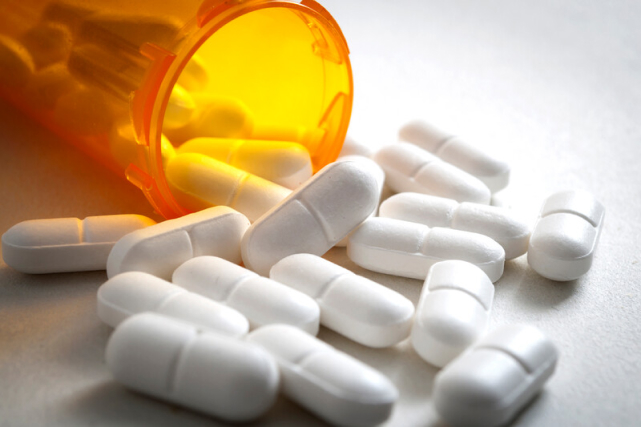Opioids
Opioids can safely reduce pain when prescribed and used correctly. When misused, they can lead to addiction and even death. Between July 1, 2021, and June, 30, 2022, there were 8,028 emergency and inpatient visits involving suspected opioid overdose and 1,914 confirmed opioid deaths in Arizona.
The death rate from suspected opioid overdoses spiked in 2020 along with the COVID-19 pandemic. Real-time data collected by the Arizona Department of Health Services shows that this devastating trend is accelerating.
Knowing how to prevent opioid misuse and recognizing and responding to opioid overdose can help save a life.

Facts & risk factors
Opioids are a type of drug that can help block pain. For example, your doctor may prescribe an opioid to help manage low back pain or arthritis, or when you break a bone or have surgery. Though opioids can be helpful medicine, they also can be dangerous.
Common prescription opioids:
- Codeine (Tylenol #3 or #4)
- Fentanyl (Duragesic, Actiq)
- Hydrocodone (Vicodin, Norco, Lortab, Lorcet)
- Meperidine (Demerol)
- Methadone
- Morphine (MS Contin, Kadian)
- Oxycodone (Percocet, Oxycontin)
- Oxymorphone (Opana)
- Hydromorphone (Dilaudid)
- Tapentadol (Nucynta)
Illegal opioids: heroin & fentanyl
Heroin is a highly-addictive opioid drug processed from morphine that is extracted from the seed pod of certain poppy plants. Pure heroin is a white powder with a bitter taste that can be snorted or smoked. Impure heroin (due to crude processing methods) is usually dissolved, diluted, and injected into veins, muscles, or under the skin.
Pharmaceutical fentanyl is a synthetic opioid pain reliever 50 to 100 times more potent than morphine. It is prescribed for treating severe pain, often for cancer, in the form of transdermal patches or lozenges.
Fentanyl that is illegally made and sold is linked to recent cases of overdose and death in the U.S., according to the Centers for Disease Control and Prevention. Illicitly made fentanyl is often mixed with heroin, cocaine, and other illicit drugs to increase its euphoric effects.
Risks of Addiction
Opioids help people manage pain and recovery. But they do have risks. Here are four of the biggest dangers:
Taking them too long
Opioids can become addictive within just five days for some people. Once dependent, the body needs more of the drug to get the same effect, which leads many people to take the drug too often or to take more than they should.
Taking opioids with alcohol
Opioids should never be combined with alcohol. Doing so is extremely dangerous and increases the risk of death.
Combining drugs
Some drugs can cause dangerous interactions when mixed with opioids, especially those that cause drowsiness. Learn more about risks of combining drugs in the section below.
Moving to a more dangerous drug
Over time, prescription opioid addiction can lead to trying a stronger drug, like heroin. Heroin is an illegal drug made from morphine. It has an effect similar to prescription opioids and can be deadly if overused.
Risks of Combining Drugs With Opioids
When opioids are combined with other substances, the risk for overdose increases. In 2022, more than 4 of every 5 overdose deaths in Arizona involved multiple drugs.
Mixing opioids and benzodiazepines (such as Xanax, Valium, Ativan, and Ambien) is particularly dangerous. Taking both substances can decrease breathing and heart rate, possibly leading to coma, heart attack, and death. More than 14% of opioid-related deaths also involved benzodiazepines.
If you are prescribed both opioids and benzodiazepines, you should always consult with your doctors before taking them together.
The drug naloxone (brand name Narcan®) is used in an emergency to potentially prevent an opioid overdose from becoming fatal. Carrying naloxone can help save a life.
Substance abuse centers, community organizations, pharmacies, and health clinics are among those offering medication for free. View this map to find a Naloxone distribution site near you in Arizona. If you need naloxone for yourself, a family member, or a friend, you may access naloxone at your local pharmacy through a standing order from the Arizona Department of Health Services or a prescription from your health care provider.
Medication-assisted treatment (MAT) can help break the opioid use cycle. MAT is a proven modality in treating opioid use disorder (OUD).
MAT is the use of medications in combination with counseling and behavioral therapies and can help some people to sustain recovery.
If you live in Arizona, you can find an opioid use disorder service near you.
Once you’ve stopped taking a prescription opioid, removing it from your home can help protect your family. View this map to find a drug disposal kiosk near you.